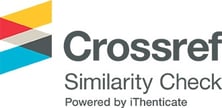Evaluasi Metode Audit Penghitungan Kerugian Keuangan Negara pada Badan Pengawasan Keuangan dan Pembangunan
DOI:
10.33395/owner.v8i3.2209Keywords:
Forensic Accounting, Investigative Audit, PKKN Audit, Corruption, BPKPAbstract
This research aims to evaluate the audit method for Calculating State Financial Losses (PKKN) by the Financial and Development Supervisory Agency (BPKP). PKKN audit results by BPKP are still not accepted or corrected by the Court. This research method is qualitative, with an evaluation approach using case studies at BPKP. The primary data used in this research are the results of interviews with BPKP auditors who have carried out PKKN audits and are experts in court. The trial decision document will be mapped based on case description themes, PKKN methods, and PKKN values. The secondary data used is a copy of the court decision on a criminal corruption case that was finalized and downloaded from the official website of the Supreme Court (MA). The implementation of the PKKN audit by BPKP is evaluated using a fraud theory approach, the REAL Tree concept, and applicable laws and regulations. The provision of expert testimony in court will be considered using the Daubert test. The results of this research are that the PKKN audit by BPKP does not follow the fraud theory approach because it does not create and test hypotheses. There is a PKKN method that differs from the REAL Tree concept because BPKP auditors apply the criteria for real and definite state financial losses (actual loss) without considering compelling interest as a time value of money concept. Providing expert information by BPKP auditors is different from the Daubert test because BPKP does not require monitoring and evaluating court decisions and does not carry out peer reviews of PKKN methods.
Downloads
Plum-X Analityc
References
Akbar, A. (2022). Rincian Rp 104,1 T yang Jadi Kerugian Negara Terbaru Kasus Surya Darmadi. Detik News. https://news.detik.com/berita/d-6262373/rincian-rp-1041-t-yang-jadi-kerugian-negara-terbaru-kasus-surya-darmadi
Astuti, C. A., & Chariri, A. (2015). [investigative audit,forensic accounting, fraud, financial state loss]. Diponegoro Journal of Accounting, 12.
Binekasri, R. (2022). Gila! Surya Darmadi Tersangka Korupsi Rp 78 T, Terbesar di RI. CNBC. https://www.cnbcindonesia.com/market/20220802121654-17-360447/gila-surya-darmadi-tersangka-korupsi-rp-78-t-terbesar-di-ri
Calhoun, M. C. (2008). Scientific evidence in court: Daubert or Frye, 15 years later. Legal Backgrounder, 23(37), 1-4.
Creswell, J. W., & Poth, C. N. (2016). Qualitative Inquiry and Research Design: Choosing Among Five Approaches. SAGE Publications.
Crumbley, D. L., Heitger, L. E., & Smith, G. S. (2015). Forensic and Investigative Accounting (Seventh ed.). Wolters Kluwer.
Ellet, W. (2018). The case study handbook, revised edition: A student's guide. Harvard Business Press.
Firmansyah, R. A. (2020). Konsep Kerugian Perekonomian Negara Dalam Undang-Undang Tindak Pidana Korupsi. Jurist-Diction (Universitas Airlangga), 3 (2).
Hopkinson, C. (2017). Using daubert to evaluate evidence-based sentencing. Cornell L. Rev., 103, 723.
International, T. (2023). Corruption Perceptions Index 2022.
Isnayanda, M., Syahrin, A., Ablisar, M., & Ekaputra, M. (2018). Perhitungan Kerugian Keuangan Negara oleh Kantor Akuntan Publik dalam Perkara Tindak Pidana Korupsi. Medan: Universitas Sumatera Utara.
KPK. (2016). Dampak Sosial Korupsi. Direktorat Pendidikan dan Pelayanan Masyarakat.
Montasari, R. (2016). Review and assessment of the existing digital forensic investigation process models. International Journal of Computer Applications, 147(7), 41-49.
Munthe, A. S. P. (2017). Analisis Pemaknaan Perhitungan Kerugian Keuangan Negara oleh BPKP dalam Tindak Pidana Korupsi Universitas Hasanuddin]. Makassar.
Prayitno, S. (2020). Evaluasi Penerapan Metode Penghitungan Kerugian Negara Dalam Membantu Penanganan Kasus Tindak Pidana Korupsi Universitas Indonesia]. Jakarta.
Ramadhan, H. (2022). Analisis Faktor Faktor Penyebab Hasil Penghitungan Kerguan Negara (PKN) Ditolak Hakim Pengadilan Tindak Pidana Korupsi dan Nilai Hasil PKN Tidak Digunakan dalam Penetapan Kerugian Negara (Studi Kasus pada Auditorat ABC) Universitas Indonesia]. Jakarta.
Sumarto, S., & Rahadian, Y. (2020). Evaluasi Penerapan Metode Penghitungan Kerugian Negara Dalam Membantu Penanganan Kasus Tindak Pidana Korupsi. Jurnal ASET (Akuntansi Riset), 12(1), 117-129.
Supriyanto, S., Hartiwiningsih. (2017). Redefinisi Unsur “yang Dapat Merugikan Keuangan (Perekonomian) Negara” dalam Tindak Pidana Korupsi. Amanna Gappa (Fakultas Hukum Universitas Hasanuddin), 25.
Tuanakotta, T. M. (2018a). Akuntansi Forensik dan Audit Investigatif. Salemba Empat.
Tuanakotta, T. M. (2018b). Menghitung Kerugian Keuangan Negara dalam Tindak Pidana Korupsi. Salemba Empat.
Downloads
Published
How to Cite
Issue
Section
License
Copyright (c) 2024 Unjur Marroha Situmeang, Dwi Setiawan Susanto

This work is licensed under a Creative Commons Attribution-NonCommercial 4.0 International License.
















